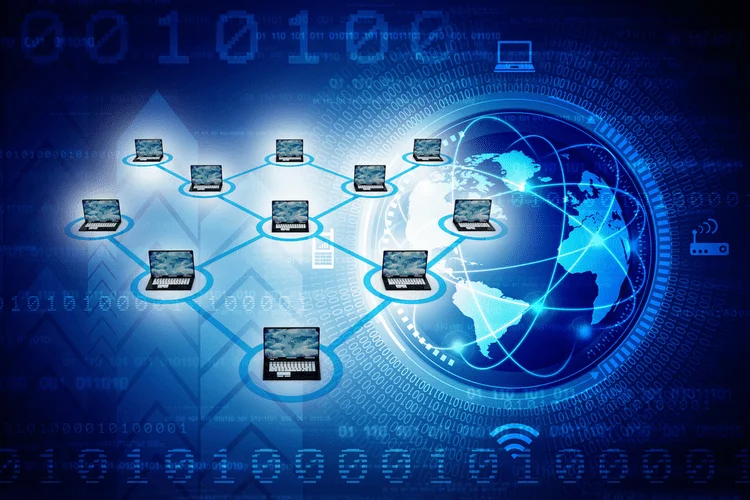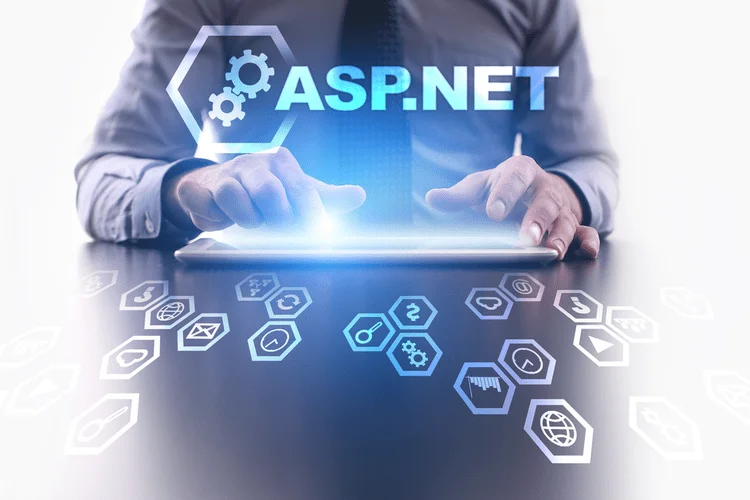This is very true for mission-critical apps which could be required to process a growing volume of data because the consumer base grows or to accommodate unpredictable peak utilization calls for. Now that you’ve seen the potential of a knowledge fabric architecture, explore these use cases to slim down one of the best space of focus to satisfy your group’s objectives. As the algorithms study extra about your information belongings, they can also start automating time-consuming improvisational duties, corresponding to sure enterprise questions that users have repeatedly queried the system about.

The last must-have piece in a platform is a workflow orchestration layer, which directs and easily passes workflows between software bots and people. K2view Data Fabric supplies a low-code / no-code framework to create and debug net providers that expose the data cloth’s data to authorized data consumers. Using a visual, drag-and-drop generator, web providers can be quickly customized and orchestrated to assist any workload. This approach lends itself to treating data as a product and supporting mesh architectures.Users or tokens that need entry to a net service are routinely assigned a task, which defines the extent of knowledge entry they’ve. Once a web service is deployed, K2view Data Fabric controls authentication and authorization in order that user access is properly restricted. While these numbers are specific to the case instance of the IBM Cloud Pak for Data, Data Fabric capabilities are related to all organizations running multi-cloud environments.
What’s Data Cloth: Architecture, Ideas, Advantages, And Ways To Implement
Data material is also the foundational data management architecture that allows optimum delivery of information merchandise to area groups. A knowledge material is an architectural strategy, designed to simplify information entry and facilitate self-service information consumption for a corporation’s unique workflows. End-to-end information cloth capabilities embrace knowledge matching, observability, master knowledge management, information high quality, real-time-data integration, and extra, all of which can be applied without ripping and replacing current tech stacks.

Then, you may need a third vendor, like IBM Cloud Pak® for Data, offering analytical providers. The knowledge fabric structure stitches these environments collectively to create a unified view of data. Data administration teams are addressing these challenges head on with knowledge material solutions. They are leveraging them to unify their disparate data systems, embed governance, strengthen security and privateness measures, and supply extra knowledge accessibility to employees, particularly their enterprise customers.
Latest Huge Data Articles
Through an built-in layer that sits on prime of systems and knowledge units, information fabrics centralize your knowledge in a single spot for you to entry, relate, and prolong. You might also think of knowledge fabric as an abstraction layer for managing your knowledge. Data mesh uses advanced API integrations throughout microservices to sew collectively methods throughout the enterprise. With information mesh, while you keep away from lots of knowledge engineering work, you trade it for extra software program improvement efforts coping with the APIs.
In distinction, information cloth and data mesh architecture design takes a special strategy. They give attention to connecting directly to the data sources quite than extracting your whole information. This permits you to entry real-time information and avoid well timed and expensive migration projects.
The foundation of a data cloth is federated lively metadata—often referred to as the data that describes knowledge. For enterprises looking for velocity and agility, a course of automation platform with information fabric capabilities also improves resiliency and security as you tweak processes in response to changing business or regulatory calls for. A knowledge cloth thrives in situations the place knowledge is consistently changing, corresponding to applications that involve partner data-sharing. Because the information is virtualized and connected directly to the supply systems, you can simply read/write to these techniques. This single source of data gives you an entire view of your business—a holy grail that organizations have chased for years in search of higher business outcomes.
Dataops For Analytics
The Appian AI Process Platform consists of every little thing you have to design, automate, and optimize even probably the most complicated processes, from start to finish. The world’s most revolutionary organizations trust Appian to enhance their workflows, unify knowledge, and optimize operations—resulting in higher growth and superior customer experiences. In order to properly deal with these service requests, the enterprise wants to attach all three of their disparate techniques. Plus this data is consistently changing so it would be stale by the point it got to the business customers. Data fabric establishes the semantic definition of the totally different information merchandise, the info ingestion modes, and the required governance insurance policies that secure and shield the data. Other challenges include totally different entry mechanisms discovered among the numerous databases and the difference in APIs and question languages.
- K2view Data Fabric unifies multi-source information for each business entity source into a single Micro-Database, one for each occasion of a business entity.
- The major goal of these approaches is to gather knowledge in a single repository—not connect it.
- These intricate, lengthy processes involve multiple folks, departments, and systems, often including legacy expertise.
- Unified definition and enforcement of knowledge policies, information governance, information security and information stewardship for a business-ready information pipeline.
- This is especially true for mission-critical apps that could be required to course of a growing volume of data because the consumer base grows or to accommodate unpredictable peak utilization calls for.
- This orchestration provides a centralized attain throughout all factors of your information panorama.
Process automation refers to tools that assist enterprises automate and enhance entire business processes, similar to managing the client lifecycle in banking, optimizing supply chain operations, or speeding up insurance coverage underwriting. These intricate, lengthy processes involve multiple people, departments, and techniques, typically including legacy expertise. A course of automation platform combines an array of applied sciences to do the work, including robotic course of automation (RPA), intelligent doc processing (IDP), workflow orchestration, artificial intelligence (AI), system integrations, and business guidelines. These information integration efforts through knowledge fabrics enable for extra holistic, data-centric decision-making. Historically, an enterprise could have had totally different information platforms aligned to particular strains of enterprise. For example, you might need a HR knowledge platform, a provide chain information platform, and a buyer data platform, which home information in different and separate environments despite potential overlaps.
In addition to those pillars, you’ll have to have in place the everyday components of a robust knowledge integration solution. This includes the mechanisms for amassing, managing, storing, and accessing your knowledge. Plus, having a correct data governance framework which includes metadata management, data lineage, and data integrity finest practices.
In these situations, it’s virtually sure that the database and data management policies of the previously independent organizations might be totally different, making assortment of information throughout organizational boundaries tough. This allows the mixed entity to gradually harmonize on a single (virtual) data model if desired, however at the best tempo for operational efficiency while sustaining profits and gross sales. Essentially, knowledge cloth could be described as a converged platform supporting the various knowledge administration needs to ship the best IT service levels throughout all disparate information sources and infrastructure varieties.
Handle Quality And Security Within The Modern Data Analytics Pipeline
K2view has developed an operational information cloth that ingests data from any source, in any data delivery fashion, after which transforms it for supply, to any target, in milliseconds. K2view Data Fabric unifies multi-source information for each enterprise entity source right into a single Micro-Database, one for each occasion of a enterprise entity. Injecting unified, recent knowledge from multi-source enterprise purposes into LLMs, utilizing a Retrieval-Augmented Generation (RAG) framework, to generate personalized, reliable recommendations. Organizations make investments vital sources and efforts into delivering the most effective efficiency for their apps and providers.
While conventional data management concepts similar to DataOps are targeted on the operationalization of large and distributed data property, the Data Fabric is concentrated on capabilities that unify numerous and distributed knowledge property. At its highest stage, a knowledge fabric creates a unified information surroundings that breaks down information silos. This implies that anyone within your organization has access to the entirety of the organization’s information (provided after all that you simply grant them full permissions). For instance, if a licensed person in marketing needs to take a look at information from sales or procurement, they can access that information simply as simply as they could entry marketing information. If you have knowledge hiding in silos and techniques that don’t talk well, you might find a way to automate pieces of a course of, however you can’t automate the whole course of end to end.
The data cloth, as we’ve discussed, not only unifies the data, but in addition makes sense of it by utilizing AI and ML to establish significant relationships that might exist between data units. For occasion, there could be knowledge on product purchases in a customer listing that overlapped with procurement knowledge on the general demand for these products. This may then be used to optimize promoting efforts to the tastes of specific customers. Machine learning and synthetic intelligence algorithms are indispensable elements of a knowledge cloth design. In fact, ML and AI are largely answerable for monitoring data pipelines and suggesting essentially the most acceptable integrations and relationships. These algorithms collect info from the data as it is connected to the fabric, and regularly canvas all the organization’s information, determining its traits and understanding the place probably helpful relationships and connections exist.
The components stock lives in an ERP system, the customer’s equipment lives in a homegrown relational database, and the customer information sits in their CRM, for example. Data warehouses, lakes, and lakehouses are nice instruments for analytics and operational reporting. But they still require you to raise all the data out of your siloed methods and cargo it into a model new system (the warehouse, lake, or lakehouse). Plus you want developers to extract, transform, and load the data in order that it can be used, adding growth time and costs. Enabling knowledge engineers to organize and ship fresh, trusted data – from all sources, to all targets – quickly and at scale. As the diagram above illustrates, as information is provisioned from sources to customers, it is cataloged, prepared, enriched to provide insights and suggestions, orchestrated, and delivered.
Above all else, a knowledge cloth supplies context in your organization’s data, and wealthy context is the key to a successful information fabric design. The ability to offer context to knowledge largely rests on the quality of the “metadata,” or the info that describes the info. You can think https://www.globalcloudteam.com/data-mesh-vs-data-fabric-key-differences-and-benefits/ of metadata as being considerably like a book’s bibliographic information, such because the author, title, and table of contents. Just as this info isn’t the book however describes the guide, likewise metadata is information that isn’t actually a half of the information, but is additional knowledge that describes the contents of the data.
However, a data material can permit decision-makers to view this information extra cohesively to better understand the client lifecycle, making connections between data that didn’t exist before. Data teams don’t want to have one information material answer for information analytics, and another one for operational intelligence. They want a single information material for both.The best information material optimizes the field of vision – and the depth of understanding – for every single enterprise entity – buyer, product, order, and so forth. It provides enterprises with clear, contemporary information for offline information analytics, and delivers real-time, actionable information for on-line operational analytics. A second widespread use is the creation of a unified knowledge model for an organization following a merger and acquisition.

Today’s IT organizations are applying information analytics across built-in service management and operations management processes, technologies, and groups to deliver new companies and maintain the absolute best customer expertise. Data Fabric permits organizations to overcome the technical challenges in maintaining a diverse portfolio of data storage and infrastructure deployments. Customers can leverage the liberty to function mission-critical data-driven IT services, apps, storage, and access from a spread of hybrid IT infrastructure sources based mostly on changing technical and enterprise necessities. Data cloth refers back to the unified knowledge management structure and the set of capabilities that provide consistent capabilities to conveniently join data endpoints and allow end-to-end knowledge administration capabilities.
Data Material
AI analytics refers to the use of machine studying to automate processes, analyze knowledge, derive insights, and make predictions or suggestions. Data material is equally important for operational use circumstances – corresponding to churn prediction, credit scoring, information privacy compliance, fraud detection, real-time information governance, and Customer 360 – which rely on correct, complete, and fresh knowledge. A information material, by its very nature, provides complete visibility into all of the information. Just as an information analyst doesn’t must go looking for information sets, if an government known as to the carpet by a regulator or is coping with a lawsuit, the legal staff doesn’t have to spend inordinate quantities of time looking down data, either.
